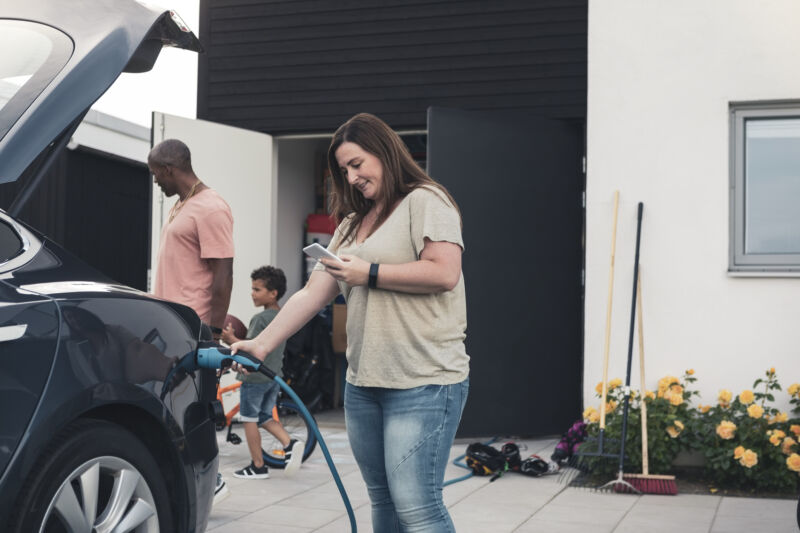
Last month, California finalized a rule that will ban the sale of new gas-powered cars, starting in 2035. Obviously, that’ll accelerate the adoption of electric vehicles and encourage other states to do the same. (Oregon has already followed California’s lead.) But less obviously, spurning carbon-spewing vehicles could help buttress the United States’ ancient, creaky electrical grids.
Cars are no longer just modes of transportation; they are increasingly integrated into the larger energy infrastructure. If your EV is sitting in your garage fully charged (cars are typically parked 95 percent of the time) and you lose power, that big battery offers an opportunity to keep the lights on. And when there’s a sudden spike in demand for the grid—because everyone wants to turn on their AC during a heat wave or their heat during a deep freeze—utilities could pay homeowners for their excess battery power.

This is known as bidirectional or vehicle-to-grid charging (aka V2G), and it’s “one of the legitimate game changers,” says Clifford Rechtschaffen, commissioner of the California Public Utilities Commission. “If all the EVs in the state plug in during these peak load times and feed power back to the grid, they’re acting as giant batteries. We could use them to greatly relieve stress on the grid during the periods of greatest need.”
It’s still early days for V2G. More than 100 V2G pilots are scattered worldwide, though most are in Europe. California’s experimentation has been limited to small test programs. Still, more makers of cars and chargers are offering two-way charging, and experts think the concept could work on a large scale. Some 200 million electric vehicles could be on global roads by 2030, according to a recent estimate. California alone could have 14 million by 2035, the Natural Resources Defense Council estimates. If just local utilities could exploit all those batteries, they’d be able to power every home in the state for three days.
When someone plugs in a car to charge it, alternating current (AC) power is converted into direct current voltage, which is stored inside the car’s battery. If the owner has a bidirectional charger, that DC power can be converted back to AC and added to the grid.
Bidirectional chargers are far from common today and can be expensive, often requiring additional specialized hardware. Yet automakers and other companies are starting to roll them out to help EV owners contribute to the grid or to store and then convert power for their own purposes. Ford’s new electric F-150 can power a home for up to three days—a serious perk in the climate-change-wracked dystopia to come. Volkswagen has touted the bidirectional charging capabilities of its newest and upcoming EVs. Just this month, Nissan approved the first bidirectional charger for the all-electric Leaf, a car that has been sold in the US for almost 12 years.
But utilities will likely play the biggest role in ushering in a new era of electricity grids, says Max Baumhefner, a senior attorney at the Natural Resources Defense Council. One easy way they can encourage EV drivers help the grid is by offering “time-of-use” rates, which make it cheaper for owners to charge at times when the grid is less taxed—for example, when most folks are asleep at night. After watching 10 years of success with these rates programs, Baumhefner has concluded that “if we give people a little nudge, they will respond.” This sort of strategy can actually keep costs down for all grid users by helping utilities use the infrastructure they already paid for more efficiently, and avoid making upgrades.
The trick will be standardization, says Katie Sloan, vice president of customer programs and services at the utility Southern California Edison. As more people start sending battery power back to the grid, it would help if the various EVs and charging systems were technologically integrated. “It’s really analogous to what we saw in the solar industry,” says Sloan. “That was the first time we were moving from one-way power flow into homes really having bidirectional power flow.” Similarly, automakers, charging companies, and utilities need to work together to make use of EV batteries sitting in garages.
https://arstechnica.com/?p=1882783

